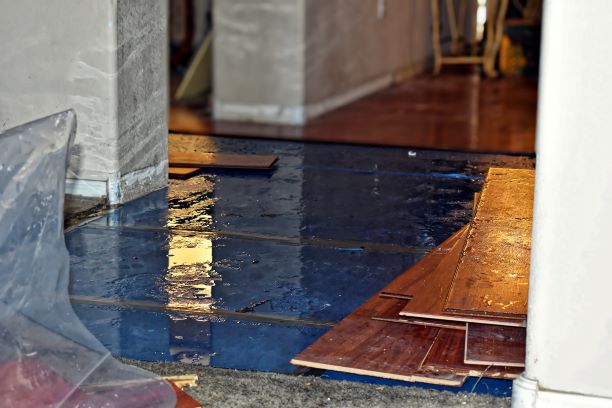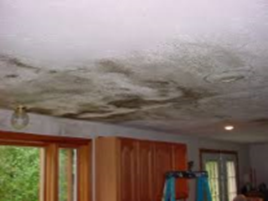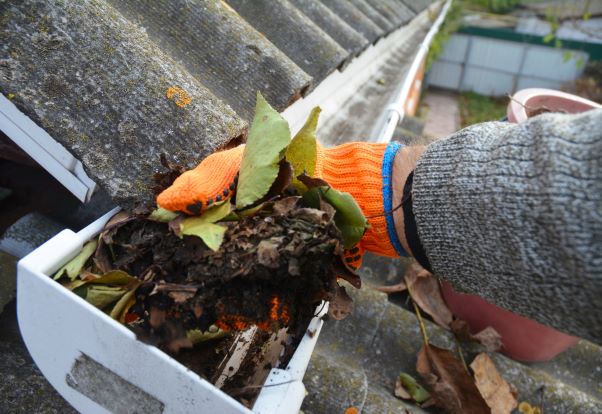
Insurance and Water Leak Repairs

Determining whose insurance pays for condo water damage repairs can be challenging. Who pays for water leak damage from an upstairs condo? A thorough review of the HOA’s master policy coverage and governing documents can help clarify whether the condo owner or the association pays.
Even minor flooding can cost thousands of dollars in losses and repairs, and there is a 26 percent chance of experiencing a flood during the life of a 30 year mortgage. Flood ranks more than six times the likelihood of fire.
It’s a good practice for condo owners to review the HOA’s master policy before an event occurs. This reveals any gaps in coverage and allows owners to add to their individual policy.
An HO-6 insurance policy protects condo units and provides personal liability. It also provides living expense coverage if a condo becomes uninhabitable. HO-6 policies are also called walls-in coverage because they protect your individual unit.
Standard condo insurance doesn’t apply in certain situations, such as floods. The HOA’s master policy covers only the building’s common areas, and flood damage is virtually never covered by standard homeowners insurance.
HOA Master Policy Coverage for Floods
The Master Insurance Policy purchased by the homeowners association covers all common areas in a condominium building unless stated otherwise in the bylaws. This includes not only the building’s roof and exterior but also internal areas such as elevators and hallways.
All unit owners share the cost of the Master Insurance Policy as part of their recurring HOA assessment. There are three main types of condo master insurance policies:
- Bare walls coverage. This is a limited Master Insurance Policy that covers the structure and most of the common area fixtures and furnishings. It also covers any property that is collectively owned by the condo association.
- Single entity coverage. This covers everything included in bare walls coverage and also provides coverage for built-in property such as fixtures in individual condo units.
- All-in coverage. This applies to all property collectively owned by the condo association or which is part of the condominium structure. It’s the most comprehensive condo master insurance policy, covering all condo improvements and additions.
Individual Coverage for Water Damage Repairs
There are two types of individual policies that cover losses caused by water: homeowners insurance and flood insurance. These policies provide two different types of coverage that complement each other, but DO NOT overlap.
Homeowners’ Insurance.
Most policies cover damage to your home caused by a sudden or accidental water event. A water event might include a burst pipe, wind, or storm-driven rain. Water damage is usually not covered if it is caused by poor maintenance. Examples include clogged gutters, a poorly maintained roof, and condensation buildup due to inadequate ventilation or non-repaired leaks.
The amount of condo insurance you need to purchase depends on the coverage in your HOA’s Master Insurance Policy. Ask the association for a copy of its declaration page, which details the policy and what it covers.
Dwelling coverage typically includes the flooring, interior walls, cabinetry, sinks, tiling and any other permanent fixture. Your condo insurance policy pays up to the coverage limit of the policy for a covered peril in the event your condo is damaged or completely destroyed. This is usually equal to the full cost of replacing the unit.

Covered property can include furniture, clothing, electronics and any other items not permanently attached to the unit.
Loss of use coverage isn’t as well-known as property or structural coverage, but it can be extremely valuable. This provides you with reimbursement for extra expenses incurred in order to maintain your regular standard of living for a condo that becomes uninhabitable due to damage or an evacuation order.
Loss assessment is an optional add-on to cover perils where the condo owners are financially responsible for a shared loss. Assessments can range from a few hundred dollars into triple-digit numbers. Evaluate the physical and financial health of your HOA in determining whether adding this option might be prudent.
A homeowners’ policy does not protect against flood damage.
Flood Insurance.
A separate flood insurance policy can cover water damage to your home and contents that are not covered under your homeowners’ policy. Separate policies are available through the National Flood Insurance Program from the Federal Emergency Management Agency (FEMA). Flood insurance is available to homeowners and renters for both personal and commercial properties. The cost of insurance varies depending on the amount of insurance purchased, what is covered and a property’s flood risk. It typically takes 30 days for flood insurance to take effect from the date of purchase.
Notify your insurance company as soon as possible when you have a claim. There should be a toll-free claims number on your policy. Most companies require you to follow up with a written notice with information about what happened.
Tips that help the water damage claims process go more smoothly.
- Review your policy to make sure you understand what it covers and what it doesn’t. If you’re not sure, ask your agent to explain.
- Have your policy number ready when you call your company. Be prepared to answer questions about the damage.
- Take pictures or videotape the damaged area and any damaged property before you make any repairs. This is especially important if you make repairs before your insurance adjuster has seen the damage.
- Don’t throw away anything you removed from the house until your insurance adjuster has seen it.
- Make reasonable repairs to prevent further damage to your home and property, but don’t make large structural or permanent repairs until your company approves these.
- Write down everything you spend on repairs and keep the receipts.
- Keep a log that lists everyone you spoke with at your insurance company. Note the time, date, name of the person, and what you talked about. Follow up with the company in writing to confirm important details. Keep copies of letters or other documents you and your company send each other.
Additional Assistance from Your Agent
A good agency will have a list of approved water damage cleanup vendors in your area. A good agent will contact these companies in person and ask about their customer service.
- Can the vendor get to the customer within an hour?
- How quickly will they call a new customer after agency contact?
- Do they have a secure location to store a customer’s furniture?
- How about carpet drying racks?
Preventative Maintenance
If there is water damage, it is important to dry all wet areas. Use air circulation to aid in the drying process and cover exposed areas with a tarp. Covering exposed areas along with drying and dehumidifying wet areas can help minimize the possibility that mold will form. Move furniture that is standing in water. Contact your insurance agent immediately to start the claims process.
Protecting Your Home from Future Water Damage
Inspect your home regularly for signs and sources of water damage. After it rains, check for water stains or odors inside your house. Create a maintenance schedule to check the common sources of water leaks on a regular basis, and contact a service company with any questions or concerns:

- Hot water heaters. Hot water heaters begin failing after about twelve years and can rust or develop cracks over time. Check your water heater for rust and deterioration every year. Check the drain pan for water and ensure that the drain line for the overflow pan is not clogged. Drain and clean the water heater as recommended by the manufacturer.
- Garbage disposal. Routinely check for cracks or other sources of leaks.
- A/C drain lines. condensation drain lines from the evaporator coils can clog, causing water to overflow from the drip pan. Check the drip pan periodically for water. Consider an annual service call to reduce the buildup of algae and mold in the drain line.
- Indoor and outdoor pipes and faucets. Routinely check indoor pipes under cabinets and sinks for leaks, rust, and any signs of deterioration. Insulate supply lines in attics, crawlspaces, and exterior walls to minimize potential water damage from frozen and broken outdoor pipes. Protect exposed outdoor faucets, sealing gaps in exterior walls, and maintaining adequate heat in your home.
- Appliance hoses. Broken hoses are among the most common causes of water damage. Regularly inspect hoses and hose fittings on washing machines, ice makers, and dishwashers for kinks, cracks, bulges, or deterioration. Replace standard rubber washing machine hoses every two to five years, or more often if they show signs of wear. Consider using steel-reinforced hoses for longer life.
- Showers, tubs, sinks, toilets, windows, and doors. Water leak damage can appear around bathtubs, showers, sinks, and toilets. Make sure you have a watertight seal of caulk around tubs, sinks, toilets, tubs, shower stalls, windows, and doors to prevent leaks. Cracks or mold on caulk or tile grout may indicate that you don’t have a watertight seal. Remove all caulk or grout, clean and dry the surface thoroughly, and apply fresh caulk. Don’t apply new caulk or grout on top of the old materials.
- Attics and ceilings. Routinely check for wet insulation and water stains.
- Wallpaper. Routinely check for bubbling, peeling, and stains.
- Roofs. Keep roofs free of debris that can damage roofing and allow water to seep in. Trim tree branches to prevent them from rubbing and damaging the roof. Repair missing or damaged shingles. Properly seal any cracks around chimneys, skylights, and vents. Check metal flashing for holes, cracks, or other damage. Replace flashing or use silicone caulk to seal any openings.
- Rain gutters and downspouts. Direct rainwater away from your home. Keep gutters clear and make sure downspouts are long enough to carry water away from your foundation. Overfilled gutters can cause water to back up on the roof, damaging eaves and roofing material.
- Wet vacuum. Wet vacuums are the first line of defense in preventing water from pooling in recessed areas.
- Weep holes. Weep hole openings at the foundation level of a brick wall allow moisture to escape from behind the wall. Don’t close or block these openings.
- Landscape. Yards should slope away from the house to prevent puddling near the foundation or under pier and beam houses. Don’t allow sprinklers or sprinkler heads to soak the exterior of your house.
- Hydro Jetting. Consider periodically jetting common area drain lines of a building, depending on the age and condition of the pipes. Sometimes sewer pipes can be extremely clogged by debris or even root systems that have invaded your plumbing. In such circumstances, we use hydro jetting to get your plumbing free of blockages that traditional techniques can not clear.
- Water Cop. Water Cop automatic water shut-off systems provide your home with round-the-clock indoor flood protection. It works with wired and wireless flood sensors, wall switches, and most home security and home automation systems.
Other Precautions to Prevent Water Damage
- Know the location of water valves. Make sure everyone knows where the main valve is located and how to turn the water off.
- Monitor utility bills. An unusually high water bill could signal a water leak.
- Shut off the water before traveling. Turn the water off at the main valve or directly on major appliances. Consider leaving a house key and contact information with a neighbor or trusted friend. Ask them to check inside and outside your home while you are away.
The only thing insurance companies really sell are CLAIMS! The last thing you need is a fight with an insurance company to force it to pay.
Bridgette Tabor | Commercial Insurance Specialist, Kirk Miller Insurance
Claims Process for Water Damage Repairs
First Notice of Loss
You won’t speak with an adjuster during your first call to report a loss, but facts you relate during the call will get your claim started. Have the following information available during this call: (1) date of loss; (2) cause of loss; (3) policy number; (4) multiple ways to contact you (cell number, work number, and email address).
Adjuster Assigned
At the end of the first notice of loss, you should have: (1) The claim number; (2) The name and phone number of the adjuster; and (3) An expectation of when the adjuster will contact you. Contact your agent if you have not been contacted at the appointed time.
If you have an emergency situation after a loss and need someone to extract water or secure property, the reporting center can provide the number of a local vendor to do the work if you haven’t already contacted a restoration company.
After you file the claim, you should hear from the insurance company within a day or two. The insurance company will tell you about its claims process and any responsibilities you have. The company should give you the name of the person who will be working on your claim.
The company must start investigating your claim within fifteen days of receiving written notice. They may ask you for more information. The company has fifteen business days to accept or reject your claim after you provide the information, . If the company says it will pay your claim, it must pay within five business days. If the company rejects your claim, it must explain its reasons in writing.
As part of the process, the company will send an adjuster to your property to look at the damage. The inspection may be delayed if there was a disaster and the area isn’t deemed safe. Try to be home when the adjuster arrives so you can discuss damage and answer questions.
The company will advise you in writing whether your policy covers the damage. They will provide you with an initial damage estimate if the damage is covered. Keep in mind that the estimate may change. The company may provide you with a list of contractors that you’re not obligated to use.
Settling a Claim for Water Damage Repairs
Your insurance company has roughly thirty 30 business days after agreeing to pay your claim to issue you a check. If you don’t get your check within 30 business days, call your agent or company.
If you have a replacement cost policy, most companies pay claims with two checks. The company will give you the first check after the adjuster has reviewed your damage. This check will be for the estimated cost of repairs, minus depreciation and your deductible. A deductible is the amount of the claim that you’re responsible for paying yourself. Review your policy or ask your agent or adjuster if you don’t know how much your deductible is.
The company will issue you a second check for the balance of your claim upon their receipt of the contractor’s bill for the finished job. You must complete repairs or replace your property within a certain number of days from the date of loss. Review your policy or ask your agent.
Replacement Cost vs. Actual Cash Value
- Replacement cost is what it costs to rebuild or repair your home based on current construction rates. This differs from market value, as it does not include the land value. Ask your company if you are not sure how much it would cost to rebuild your house.
- Actual cash value is what it costs to rebuild or replace your property, minus depreciation. Depreciation is a decrease in value due to wear and tear or age. If you have only actual cash value coverage, you may not be able to completely rebuild if your home is destroyed.
Read your policy carefully to know whether it offers replacement cost coverage or actual cash value coverage. If your policy provides actual cash value coverage, you may be able to buy an endorsement to increase your coverage.
